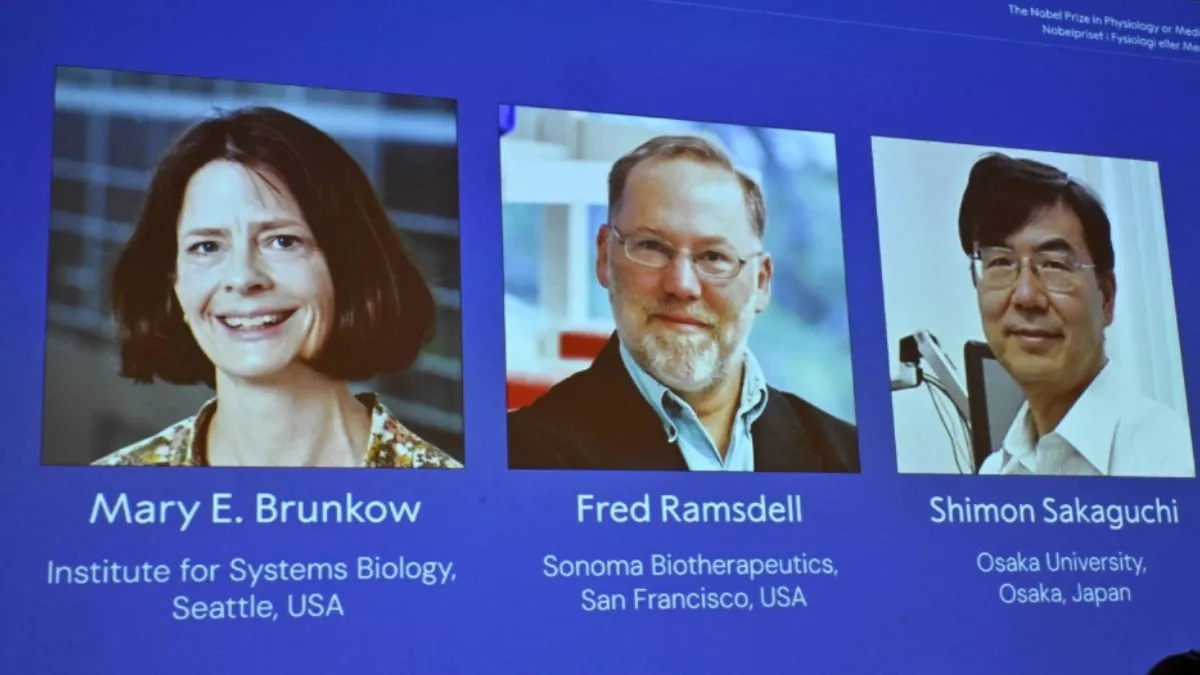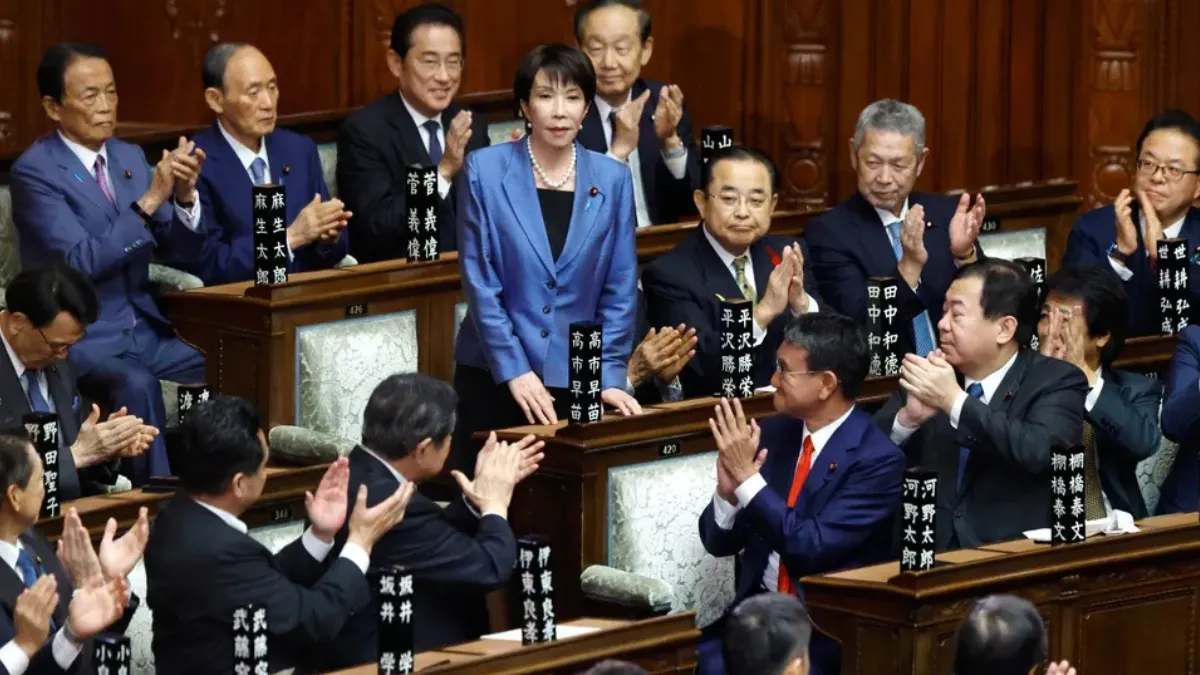Breakthrough in Understanding the Immune System Wins 2025 Nobel Prize in Medicine
The Nobel Medicine Prize Winners 2025 were announced on Monday, recognizing three outstanding scientists for their groundbreaking work in the field of immunology. The award went jointly to Japanese immunologist Shimon Sakaguchi and American researchers Mary Brunkow and Frederick Ramsdell.
Their pioneering discoveries about peripheral immune tolerance have opened new pathways in medicine, transforming how doctors understand and treat autoimmune diseases and cancers.
Who Are the Nobel Medicine Prize Winners 2025?
BREAKING NEWS
— The Nobel Prize (@NobelPrize) October 6, 2025
The 2025 #NobelPrize in Physiology or Medicine has been awarded to Mary E. Brunkow, Fred Ramsdell and Shimon Sakaguchi “for their discoveries concerning peripheral immune tolerance.” pic.twitter.com/nhjxJSoZEr
The 2025 Nobel Prize in Physiology or Medicine has been awarded to three brilliant scientists who changed the world’s understanding of how the body’s immune system prevents self-destruction.
- Shimon Sakaguchi (Japan) – Professor at the University of Osaka, known for discovering a previously unknown class of T cells that regulate immune balance.
- Mary Brunkow (USA) – Researcher at the Institute for Systems Biology in Seattle, who contributed to identifying the genetic and functional role of regulatory T cells.
- Frederick Ramsdell (USA) – Scientist at Sonoma Biotherapeutics, who played a vital role in understanding how immune tolerance prevents autoimmune diseases.
Their combined research laid the foundation for the study of regulatory T cells, a special type of immune cell that acts as a “security guard” to protect the body from attacking itself.
Sakaguchi’s Discovery: A Turning Point in Immunology
Back in 1995, Shimon Sakaguchi challenged the mainstream thinking of the scientific community. At that time, most researchers believed that immune tolerance — the body’s ability to avoid attacking its own cells — developed only through a process called central tolerance, which occurs in the thymus.
However, Sakaguchi discovered something remarkable. He identified a new class of T cells, now known as regulatory T cells (Tregs), which operate outside the thymus. These cells help control the immune response, ensuring that the immune system attacks harmful invaders but not the body’s own tissues.
According to the Nobel Committee, “Sakaguchi was swimming against the tide when he made his key discovery. He showed that the immune system is more complex than we thought, introducing a new dimension in immunological research.”
This breakthrough led to the creation of an entirely new field in medicine known as peripheral immune tolerance, which has become crucial in the fight against autoimmune diseases like lupus, rheumatoid arthritis, and multiple sclerosis.
American Scientists’ Contribution: Expanding the Discovery
While Sakaguchi’s early research laid the foundation, American scientists Mary Brunkow and Frederick Ramsdell took the work a step further. Their studies focused on understanding how regulatory T cells function at the molecular and genetic levels.
Brunkow’s work at the Institute for Systems Biology identified critical genes responsible for the development of Tregs. Ramsdell, working at Sonoma Biotherapeutics, explored how manipulating these cells could lead to new therapies.
Together, their discoveries revealed how regulatory T cells act like peacekeepers, preventing harmful immune responses that can lead to chronic diseases.
The Nobel Assembly’s Statement: A Milestone for Global Health
The Nobel Assembly at the Karolinska Institute, which awards the prestigious prize, praised the trio for advancing global health research.
In its official statement, the committee said:
“Their discoveries have been decisive for our understanding of how the immune system functions and why we do not all develop serious autoimmune diseases.”
Olle Kampe, chair of the Nobel Committee, further added that the laureates’ work has not only deepened scientific understanding but also inspired new medical treatments for several life-threatening conditions.
Impact of the Discovery: From Autoimmune Diseases to Cancer
The work of the Nobel Medicine Prize Winners 2025 has had far-reaching implications in medicine. By revealing how regulatory T cells function, researchers worldwide are now exploring ways to enhance or suppress immune responses depending on the disease.
- Autoimmune Diseases – Boosting Treg activity can help control conditions like Type 1 diabetes, lupus, and rheumatoid arthritis, where the immune system mistakenly attacks the body.
- Cancer Treatment – In contrast, temporarily suppressing Tregs can help the immune system target and destroy cancer cells more effectively.
- Stem Cell Transplants – The discovery has also improved outcomes in stem cell and organ transplants by preventing immune rejection and reducing complications.
These advancements demonstrate how fundamental science can directly lead to medical breakthroughs that improve and save millions of lives.
Also read: List of Nobel Prize Winners in India: Names, Fields, and Their Impact
Why This Nobel Prize Matters in 2025
The 2025 Nobel Prize in Medicine highlights the importance of basic research — the kind of science that seeks to understand nature before thinking of applications. Sakaguchi’s determination to explore an unpopular idea in 1995 ultimately changed how the medical world views immunity.
It also serves as a reminder of the international collaboration that defines modern science. A Japanese scientist’s initial discovery, followed by American researchers’ insights, resulted in a global medical revolution.
As the Nobel Committee noted, “This is a prize that celebrates curiosity, persistence, and the courage to question established scientific beliefs.”
Looking Ahead: The Future of Immunotherapy
The discoveries made by Sakaguchi, Brunkow, and Ramsdell have already inspired new branches of immunotherapy, one of the most promising areas of modern medicine. Researchers are now developing treatments that can fine-tune the immune system — turning it up to fight cancer or calming it down to prevent autoimmune disorders.
Pharmaceutical companies and biotech firms around the world are investing heavily in this research. Early-stage clinical trials are underway to create safer and more targeted therapies for patients suffering from chronic immune-related diseases.
Conclusion: A Nobel Prize that Redefines Immunology
The Nobel Medicine Prize Winners 2025 — Shimon Sakaguchi, Mary Brunkow, and Frederick Ramsdell — have forever changed how humanity understands its immune system. Their discoveries on peripheral immune tolerance and regulatory T cells have bridged the gap between laboratory science and real-world medical treatments.
By uncovering the immune system’s inner workings, these scientists have given hope to millions worldwide who suffer from autoimmune diseases and cancers. Their work is not only a triumph of science but also a testament to human perseverance and global collaboration in pursuit of health and knowledge.
















